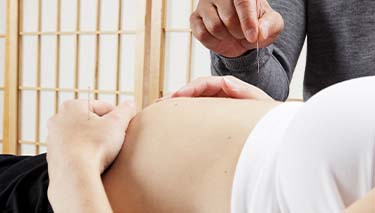Driving or riding in a car during pregnancy can be a bit awkward. It can be hard to deal with a tight parking situation at a late stage of pregnancy.
As your body changes proportions, it puts new demands on sitting comfort too. But the seatbelt and airbags reduce the risk of injury.
Both Buckled Up
When driving, make sure to adjust the driver's seat and steering wheel properly to give you full control of the car. You need to be within comfortable reach of the steering wheel and pedals, yet allowing as much space as possible between the steering wheel and the upper half of your body.
It is important that you always wear a safety belt regardless of where in the car you sit and how advanced in your pregnancy you are. Equally important is the need to wear it correctly:
- Remove bulky clothes to let the seatbelt come as close to the body as possible;
- Pull the lap belt over the thighs, lying flat under the belly;
- Make sure the torso belt is positioned between the breasts and pull tight.
- Check the driver's manual of your own car to ensure you are following the manufacturer's recommendations for correct seatbelt use.
Tips for Safe Driving
1. Use Your Senses Look around: survey the road ahead so you know what's coming up, and keep an eye on the road behind. Try planning your lane changes a few cars ahead, so that you have plenty of time to merge.
2. Stay Awake If you are tired, do not drive. Driving is often monotonous, especially on a motorway. If you feel yourself getting tired, pull over and take a short break to rest and regain alertness.
3. Drive According to the Conditions If road conditions are hazardous, reduce your speed accordingly. Wet conditions can add metres to a braking distance.
4. Never use your phone to make or receive calls. Don t text and drive.
5. Give Yourself Reaction Time Use the three second rule to establish if you have allowed sufficient room between yourself and the car in front. Watch the car in front pass a certain point in the road and then count three seconds if you get there before three, you're driving too close.
6. Never drink alcohol and drive - Check with your maternity care provider and a pharmacist if you are taking medication which could affect your capacity to drive safely.
Frequently Asked Questions
Q: Could the seatbelt harm an unborn baby?
A: Research shows that the best protection for pregnant women and their unborn babies is for the mother to wear her three-point safety belt, and to wear it correctly. This significantly reduces the foetal injury risk. Therefore, pregnant women should definitely use a safety belt at all times.
Q: How should I wear the safety belt while pregnant?
A: The top of the diagonal belt should be taut against the front of the shoulder, crossing down between the breasts and then down the side of the tummy. The lap section of the belt should be flat against the thighs and below the tummy, as low as possible it should never be allowed to ride up in front of the tummy. The belt must fit as snugly as possible against the body. Check that there are no twists in the belt.
This car safety information has been provided by Volvo. To Volvo, an unborn child is already a passenger. Since 2001, researchers at Volvo's safety centre in Gothenburg have been studying the special needs of pregnant women in terms of safety and in-car comfort. Visit the Volvo website to find out more.
Last Published* May, 2024
*Please note that the published date may not be the same as the date that the content was created and that information above may have changed since.





















